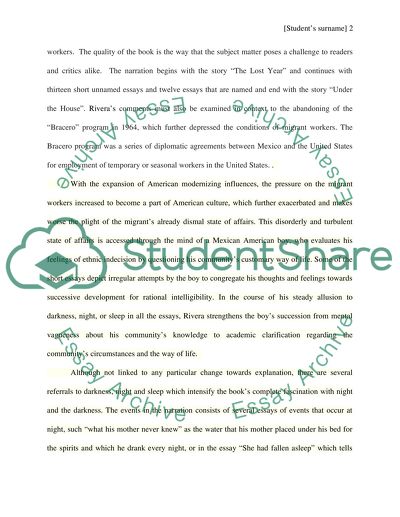Cite this document
(“The earth did not devour him by tomas rivera Essay”, n.d.)
Retrieved from https://studentshare.org/history/1470509-the-earth-did-not-devour-him-by-tomas-rivera
Retrieved from https://studentshare.org/history/1470509-the-earth-did-not-devour-him-by-tomas-rivera
(The Earth Did Not Devour Him by Tomas Rivera Essay)
https://studentshare.org/history/1470509-the-earth-did-not-devour-him-by-tomas-rivera.
https://studentshare.org/history/1470509-the-earth-did-not-devour-him-by-tomas-rivera.
“The Earth Did Not Devour Him by Tomas Rivera Essay”, n.d. https://studentshare.org/history/1470509-the-earth-did-not-devour-him-by-tomas-rivera.


